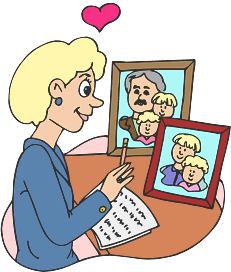|
LESSON FIVE
|
| READING ASSIGNMENT: Click here for Chapter 5
Now, for the rest of us, for whom the immigrant has already died, remember that the recent nature of their immigration means that many more records about them are available. Records are available from various government and private organizations. Family and Home Sources A list of the variety of sources you may find among family and home documents was recorded in The Complete Beginner’s Guide to Genealogy, the Internet, and Your Genealogy Computer Program, 2011 Edition in Chapter One on pages 1-18 and 1-19. Many of these papers will mention the home town in the old country during the twentieth century.
This week’s reading assignment covered techniques in using records commonly found in the home including:
It also deals with how to work with difficult family members including:
One man found several hand-written pages in his mother’s papers when helping her move. She said they came from the family and had been passed down to her, but she didn’t know who wrote it or how it connected to her family. He brought the papers to our genealogy company to transcribe and enter into his genealogy computer program. He wanted to see if they would tie into any of his lines. This is what the information said. I have added titles to the paragraphs that were not in the original. |
|
|
 The first axiom of every family historian is to begin
with home sources, and the same is especially true when researching
20th century immigrants. Immigrants who arrived after about 1890
are still within the memory of many of their living family members.
Indeed, many of these immigrants themselves are still alive. Of
course, if your immigrant ancestor is still alive, you should immediately
ask the immigrant for information about his or her town of origin.
Nobody knows more about an immigrant's origin than the immigrant
himself! However, it's not that simple for most of us. Indeed, if
your immigrant is still living, you've already realized that he
or she has all (or most of) the answers you seek. The only important
advice to add is to contact the immigrant NOW. Don't wait another
day before asking questions -- they will be gone all too soon.
The first axiom of every family historian is to begin
with home sources, and the same is especially true when researching
20th century immigrants. Immigrants who arrived after about 1890
are still within the memory of many of their living family members.
Indeed, many of these immigrants themselves are still alive. Of
course, if your immigrant ancestor is still alive, you should immediately
ask the immigrant for information about his or her town of origin.
Nobody knows more about an immigrant's origin than the immigrant
himself! However, it's not that simple for most of us. Indeed, if
your immigrant is still living, you've already realized that he
or she has all (or most of) the answers you seek. The only important
advice to add is to contact the immigrant NOW. Don't wait another
day before asking questions -- they will be gone all too soon. 